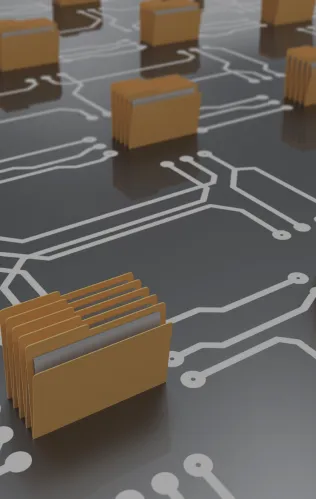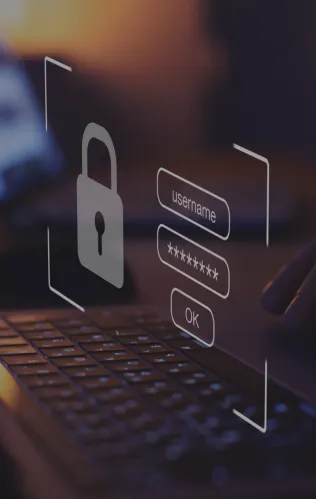Mastering Your Business Management with MIS in Education
Managing an educational institution can be a complex and challenging task, especially with the increasing demands and expectations from stakeholders such as students, parents, faculty, and staff. To succeed in this environment, educational leaders must rely on effective business management strategies that can help them streamline operations, optimize resources, and improve outcomes. One such strategy is the use of Management Information Systems (MIS) in education, which can provide valuable insights and tools for decision-making and performance improvement.
What is an MIS and how does it work in education?
An MIS is a system that provides managers with the necessary information to make decisions about an organization’s operations. The MIS gathers data from various sources and processes it to provide information tailored to the managers’ and their staff’s needs. In education, MIS can be used for various purposes, such as managing student records, monitoring financial transactions, tracking resource utilization, and analyzing academic performance. MIS typically consists of several key components, such as software, data, procedures, and people. These components work together to provide a comprehensive and integrated view of the educational institution and its activities.
Why is an MIS important in business management in education?
MIS is essential in education because it enables educational leaders to access, analyze, and leverage data to make informed decisions and achieve better results. By using MIS, educational institutions can gain visibility into their operations, identify areas for improvement, and develop strategies to optimize performance. MIS can also help educational leaders to align their resources and priorities with their strategic goals, improve communication and collaboration among stakeholders, and enhance the overall quality of education.

Applications of MIS in Business Management in Education
MIS can be applied to various aspects of business management in education. Let’s discover some of them.
MIS applications in student admissions and enrollment: MIS can be used to manage the student admissions and enrollment process, which can be a complex and time-consuming task. By using MIS, educational institutions can automate various aspects of this process, such as online applications, document verification, and fee payment. MIS can also provide real-time information about student enrollment and demographics, which can help educational leaders to make informed decisions about resource allocation and program planning.
MIS applications in managing student records and data: MIS can be used to manage student records and data, which can include personal information, academic performance, attendance, disciplinary actions, and other relevant data. By using MIS, educational institutions can store, retrieve, and analyze student data more efficiently and effectively. MIS can also provide tools for data visualization and analysis, which can help educational leaders to identify trends, patterns, and areas for improvement.
MIS applications in managing finances and budgeting: MIS can be used to manage finances and budgeting in educational institutions, which can be a critical aspect of business management. By using MIS, educational institutions can track financial transactions, monitor budget allocations, and generate financial reports. MIS can also provide real-time information about financial performance and trends, which can help educational leaders to make informed decisions about resource allocation and financial planning.
MIS applications in managing human resources: MIS can be used to manage human resources in educational institutions, which can include staff recruitment, performance evaluation, training, and benefits administration. By using MIS, educational institutions can streamline their HR processes, reduce administrative burden, and improve staff productivity. MIS can also provide real-time information about HR performance and trends, which can help educational leaders to make informed decisions about staff management and resource allocation.
MIS applications in managing curriculum and academic programs: MIS can be used to manage curriculum and academic programs in educational institutions, which can include course scheduling, program planning, and student performance evaluation. By using MIS, educational institutions can optimize their curriculum and academic programs, ensure alignment with strategic goals, and improve student outcomes. MIS can also provide real-time information about academic performance and trends, which can help educational leaders to make informed decisions about program planning and resource allocation.

Best Practices for Implementing MIS in Business Management in Education
Implementing a Management Information System (MIS) in an educational institution can significantly improve business management processes, but its success requires careful planning and execution. To ensure an effective implementation, there are several best practices that institutions should follow.
First, it is essential to assess institutional needs and select the right MIS based on factors such as the institution’s size, the number of students, and the programs offered. Next, building a dedicated team and providing staff training are crucial to ensure that the system is well-managed and used effectively.
The MIS must have a data management plan in place to ensure data accuracy, completeness, and security. Establishing data security protocols, such as access controls, firewalls, data encryption, and regular data backups, is also necessary to protect sensitive data. Additionally, MIS should integrate seamlessly with existing business management systems to ensure the smooth flow of data between systems.
Finally, regularly monitoring and evaluating MIS performance is essential to ensure that the system meets the institution’s business management needs. This includes conducting regular system audits, data quality checks, and user feedback. By following these best practices, educational institutions can successfully implement an MIS in their business management processes, leading to improved efficiency, data accuracy, and decision-making capabilities.
Challenges and Solutions for Implementing MIS in Business Management in Education
Implementing an MIS in business management in education can face several challenges. Below are some of the challenges and potential solutions:
- Addressing resistance to change: Change can be difficult, and some staff members may be resistant to implementing a new system. To address this, it’s important to involve staff in the decision-making process and communicate the benefits of the new system. Providing training and support to staff can also help ease the transition.
- Overcoming budget constraints: Implementing an MIS can be costly, and educational institutions may face budget constraints. To overcome this challenge, institutions can explore different funding sources, such as grants or partnerships. Prioritizing the most critical components of the system can also help manage costs.
- Ensuring data privacy and security: Right from the student turnover rate to the financial records, every piece of data that is ever associated with the institution paves the way for its development. The bigger the institution, the greater the volume of institutional data. Data privacy and security are critical considerations when implementing an MIS. To ensure data privacy, institutions can establish protocols for data access and use, as well as data encryption and regular backups. Data security can be ensured by implementing access controls, firewalls, and regular security audits.
- Overcoming technical challenges and ensuring system compatibility: Technical challenges can arise when implementing an MIS, including system compatibility issues with existing software and hardware. To overcome these challenges, institutions can involve IT professionals in the decision-making process and ensure that the new system is compatible with existing systems.
- Addressing staff training and user adoption: Staff training and user adoption are critical components of implementing an MIS. Institutions can provide training and support to staff to ensure that they are comfortable using the system. Providing user-friendly interfaces and ongoing support can also help increase user adoption.

Future Trends and Developments in MIS in Business Management in Education
Management Information System (MIS) is a rapidly evolving field with several emerging trends and developments that can significantly impact business management in education. Educational institutions should keep an eye on these trends to leverage the latest tools and technologies to improve their efficiency and decision-making capabilities.
Emerging technologies such as artificial intelligence (AI), machine learning, and the Internet of Things (IoT) are transforming the way institutions manage data. AI and machine learning can automate routine tasks, while IoT can help monitor and manage facilities and resources. Innovations in data analytics and visualization, such as predictive analytics and interactive dashboards, can provide real-time data and insights into student performance, academic programs, and financial management.
The growing importance of MIS in education is also an emerging trend. As institutions face increasing pressure to improve efficiency and accountability, the role of MIS in education is becoming more important. MIS can help institutions better manage resources, improve student outcomes, and make data-driven decisions that can impact the overall success of the institution.
MIS is an essential component of business management in education, and its continuous evolution highlights its importance in the future. Educational institutions should remain updated with emerging trends and developments to leverage the latest tools and technologies to improve their efficiency, decision-making capabilities and ultimately their success.
In summary, Management Information Systems (MIS) is a vital tool for efficient business management in educational institutions. This blog post has covered key points regarding MIS in education, including its applications in managing various aspects of educational institutions, best practices for implementation, challenges, and opportunities for future development. By implementing MIS and following best practices, educational institutions can streamline operations, improve decision-making, and achieve their goals. It is strongly recommended for educational institutions to invest in MIS and adopt best practices to enhance their efficiency, productivity, and ability to provide quality education to their students.
FAQ’s
A Management Information System (MIS) in education is a system that gathers data from various sources within an educational institution and processes it to provide valuable insights and tools for decision-making and performance improvement. It helps educational leaders manage student records, finances, human resources, curriculum, and academic programs effectively.
Classter offers a comprehensive suite of features tailored specifically to the needs of educational institutions, including student management, academic program management, communication tools, and integration capabilities.
Classter provides tools for personalized learning, academic tracking, and communication between students and educators, fostering a collaborative and engaging learning environment.






